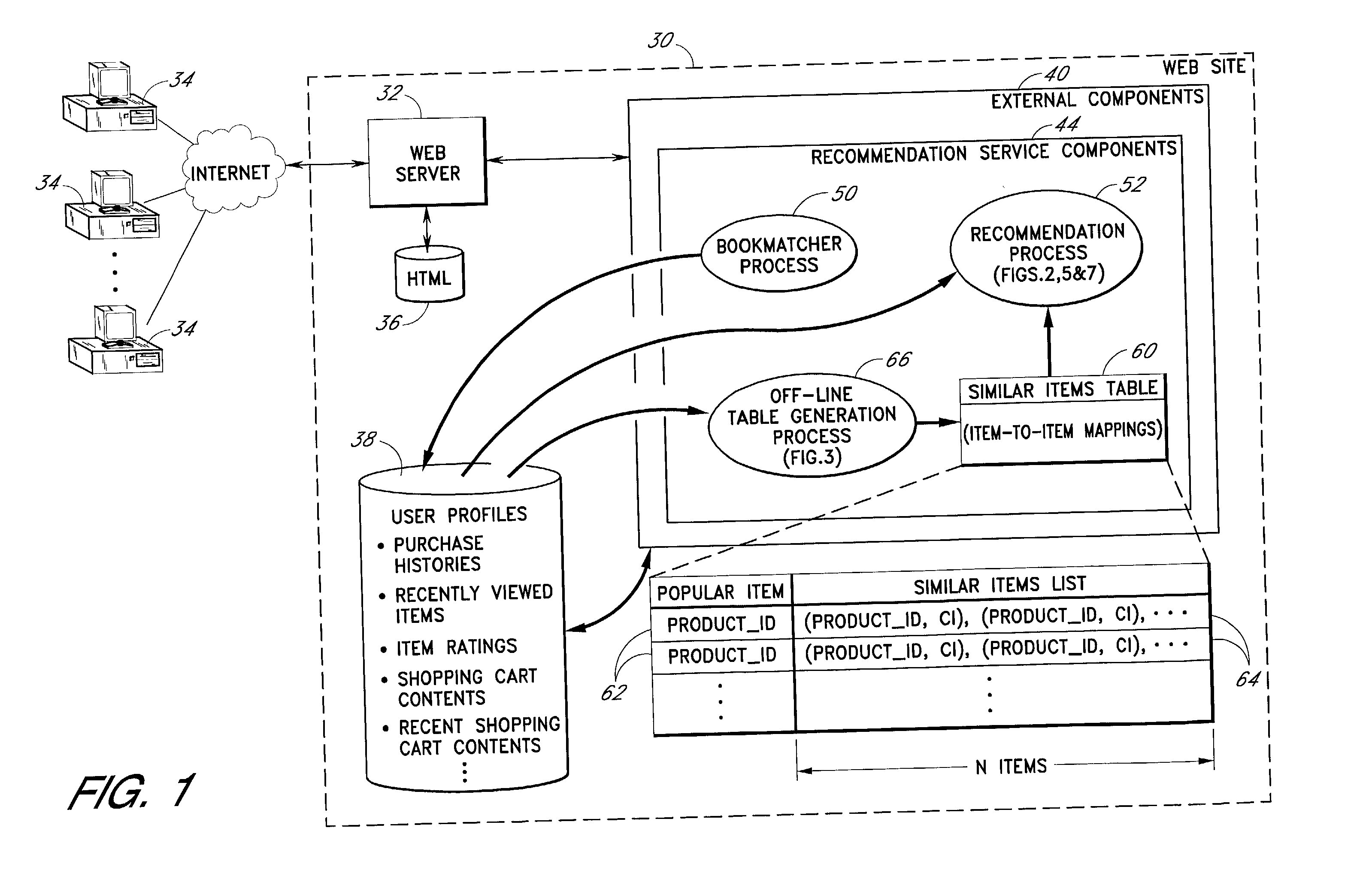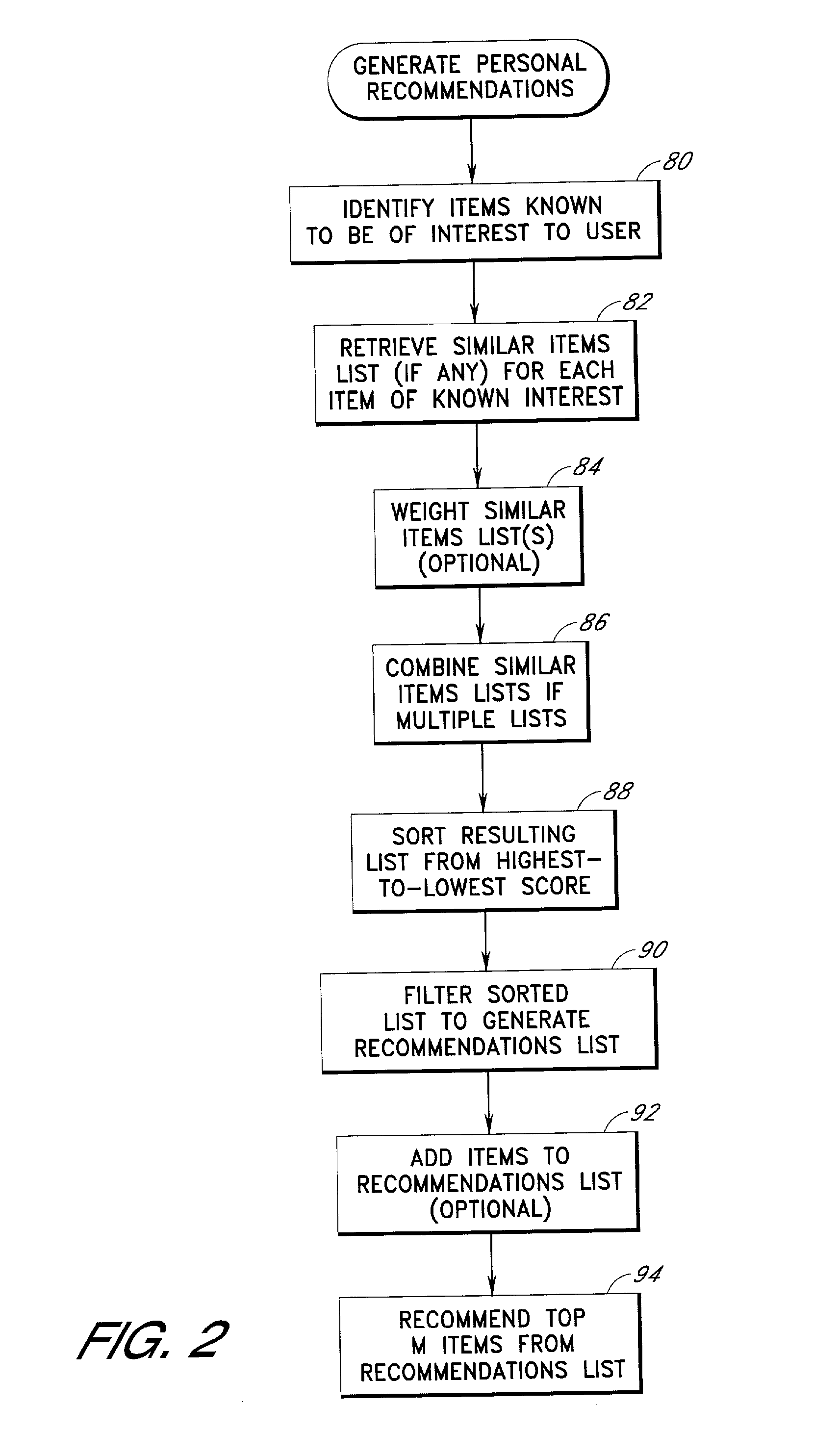Content personalization based on actions performed during a current browsing session
a content and browsing session technology, applied in the field of monitoring the activities of online users, can solve the problems of content-based systems that are not suitable for recommending products and other types of items, content-based systems generally do not provide any mechanism for evaluating the quality or popularity of items, and content-based systems generally do not provide any mechanism for recommending products or other types of items. achieve the effect of rapid generation and without sacrificing breadth of analysis
- Summary
- Abstract
- Description
- Claims
- Application Information
AI Technical Summary
Benefits of technology
Problems solved by technology
Method used
Image
Examples
Embodiment Construction
[0041] The various features and methods will now be described in the context of a recommendation service, including specific implementations thereof, used to recommend products to users from an online catalog of products. Other features for assisting users in locating products of interest will also be described.
[0042] Throughout the description, the term "product" will be used to refer generally to both (a) something that may be purchased, and (b) its record or description within a database (e.g., a Sony Walkman and its description within a products database.) A more specific meaning may be implied by context. The more general term "item" will be used in the same manner. Although the items in the various embodiments described below are products, it will be recognized that the disclosed methods are also applicable to other types of items, such as authors, musical artists, restaurants, chat rooms, other users, and Web sites.
[0043] Throughout the description, reference will be made to ...
PUM
 Login to View More
Login to View More Abstract
Description
Claims
Application Information
 Login to View More
Login to View More - R&D
- Intellectual Property
- Life Sciences
- Materials
- Tech Scout
- Unparalleled Data Quality
- Higher Quality Content
- 60% Fewer Hallucinations
Browse by: Latest US Patents, China's latest patents, Technical Efficacy Thesaurus, Application Domain, Technology Topic, Popular Technical Reports.
© 2025 PatSnap. All rights reserved.Legal|Privacy policy|Modern Slavery Act Transparency Statement|Sitemap|About US| Contact US: help@patsnap.com



